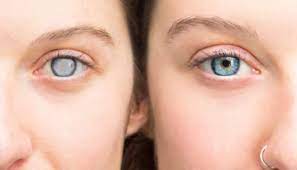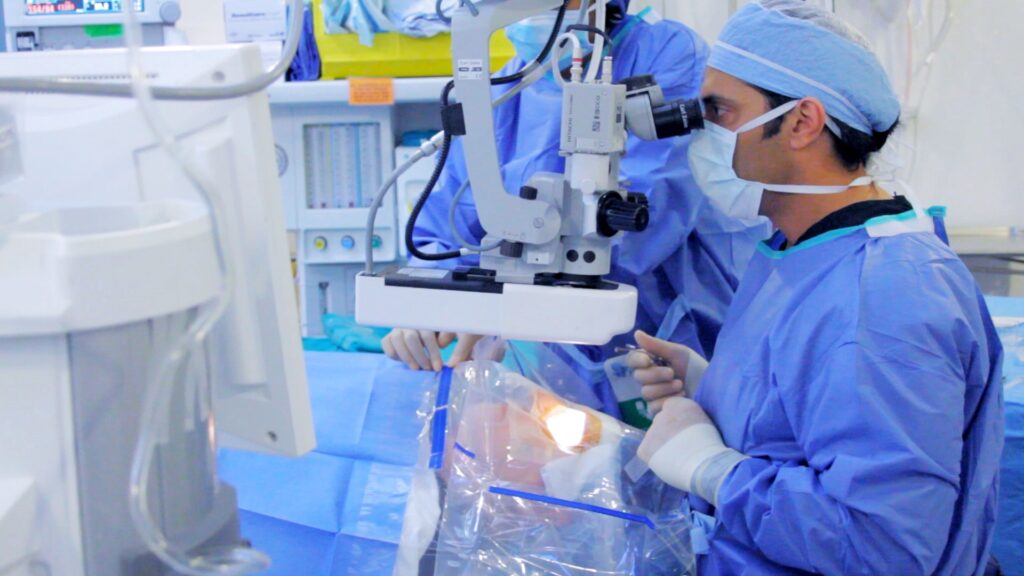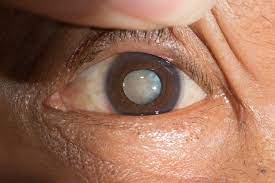Cataracts are a common eye condition that affects millions of people worldwide. Despite their prevalence, there are still many misconceptions surrounding cataracts and the surgery to correct them.
In this article, we will delve into the science behind cataracts, debunk common myths about cataract eye surgery, and shed light on the truths about this important procedure. Additionally, we will explore the significance of maintaining good eye health and regularly visiting your eye care professional.
Understanding Cataracts and Their Impact on Vision
Cataracts occur when the natural lens of the eye becomes cloudy, leading to blurred or impaired vision. While cataracts are often associated with aging, they can also develop as a result of genetic factors, trauma, or certain medical conditions. The science behind cataracts lies in the clumping of proteins within the lens, causing it to become less transparent over time. Read more about LASIK Eye Surgery: How It Works and Its Advantages by visiting https://polocontacts.com/lasik-eye-surgery-how-it-works-and-its-advantages/
The Science Behind Cataracts
Within the lens of the eye, there are proteins called crystallins that are necessary for maintaining its clarity. As we age, these crystallins can cluster together, forming opaque areas within the lens. These clusters prevent light from passing through, resulting in distorted or diminished vision.

When cataracts develop, the lens of the eye loses its ability to focus properly. This can cause a range of visual symptoms, including blurred vision, difficulty seeing in low light conditions, and increased sensitivity to glare. The clouding of the lens can vary in severity, with some individuals experiencing only a slight impairment while others may have significant vision loss.
Researchers have identified several factors that can contribute to the development of cataracts. One such factor is oxidative stress, which occurs when there is an imbalance between the production of harmful free radicals and the body’s ability to neutralize them. Exposure to ultraviolet (UV) radiation from the sun, smoking, and certain medications can increase the risk of oxidative stress and, consequently, cataract formation.
Additionally, certain medical conditions such as diabetes, hypertension, and obesity have been linked to an increased risk of developing cataracts. These conditions can affect the overall health of the eye and contribute to the breakdown of the lens proteins.
How Cataracts Affect Daily Life
The impact of cataracts on daily life can be significant. Simple tasks such as reading, driving, or recognizing faces become increasingly challenging as cataracts progress. Many individuals with cataracts experience decreased night vision and increased sensitivity to glare, making activities like driving at night or in bright sunlight particularly difficult.
Furthermore, cataracts can have a profound emotional impact on individuals. The loss of visual acuity can lead to feelings of frustration, isolation, and a decreased quality of life. Activities that were once enjoyed may become inaccessible or require additional assistance, leading to a sense of dependency.
Fortunately, cataract surgery is a highly effective treatment option for restoring vision and improving quality of life. During the procedure, the cloudy lens is removed and replaced with an artificial lens called an intraocular lens (IOL). This IOL can correct vision problems such as nearsightedness, farsightedness, and astigmatism, reducing the need for glasses or contact lenses. Read more about navigating life after retinal surgery by clicking here.
It is important for individuals to have regular eye examinations to detect cataracts early and monitor their progression. Early intervention can help prevent significant vision loss and allow for timely treatment. With advancements in surgical techniques and lens technology, cataract surgery has become a routine procedure with a high success rate and minimal risk.

Debunking Myths About Cataract Surgery
While cataract surgery is a common and highly effective procedure, there are several misconceptions that often dissuade individuals from seeking treatment. Let’s debunk some of the most prevalent myths surrounding cataract surgery.
Myth 1: Cataract Surgery is Painful
One of the most pervasive myths about cataract surgery is that it is a painful procedure. In reality, cataract surgery is typically performed under local anesthesia, meaning you will be awake but will not feel any pain. The surgeon will numb the eye beforehand, ensuring your comfort throughout the surgery. Most patients report little to no pain during the procedure.
During the surgery, the ophthalmologist makes a small incision in the eye to remove the clouded lens and replace it with an artificial intraocular lens (IOL). This process is done with precision and care to minimize any discomfort. The use of advanced surgical techniques and equipment further enhances the patient’s experience, making cataract surgery a relatively painless procedure.
Myth 2: Recovery from Cataract Surgery is Long and Difficult
Contrary to popular belief, recovery from cataract surgery is generally quick and straightforward. While some mild discomfort and blurry vision are common in the immediate aftermath of the procedure, these symptoms subside within a few days. Most patients are able to resume their normal activities, including driving and work, within a week or so.
After the surgery, the eye may feel slightly scratchy or irritated, but this is temporary and can be managed with prescribed eye drops. It is important to follow the post-operative instructions provided by the surgeon to ensure a smooth recovery. These instructions may include avoiding strenuous activities, wearing an eye shield at night, and using prescribed medications as directed.
During the recovery period, the eye gradually adjusts to the new intraocular lens, and vision improves. Many patients experience significant visual improvement within the first few days, with continued enhancement over the following weeks. It is not uncommon for patients to achieve better vision after cataract surgery than they had before the procedure.
Myth 3: Cataract Surgery Can Cause Blindness
Another common misconception is that cataract surgery can result in blindness. In reality, cataract surgery is one of the most commonly performed surgeries worldwide, with a high success rate. Complications from the surgery are rare, and the risk of permanent vision loss due to the procedure is extremely low. In fact, cataract surgery improves vision in the vast majority of cases, allowing individuals to regain their independence and quality of life.
The surgical techniques used in cataract surgery have advanced significantly over the years, ensuring safety and efficacy. Surgeons undergo extensive training and utilize state-of-the-art equipment to minimize any potential risks. In the rare event of complications, such as infection or inflammation, prompt medical intervention can effectively manage these issues and prevent vision loss.
It is important to note that cataracts themselves can cause progressive vision loss if left untreated. By undergoing cataract surgery, individuals can remove the cloudy lens and replace it with a clear artificial lens, restoring clear vision and preventing further deterioration.
In conclusion, cataract surgery is a safe and effective procedure that can significantly improve vision and quality of life. By dispelling these myths, individuals can make informed decisions about their eye health and seek the treatment they need to maintain optimal vision.
The Truth About Cataract Surgery
Now that we have dispelled some of the myths surrounding cataract surgery, let’s delve into the truth about this important procedure.
Cataract surgery has come a long way in recent years, thanks to advances in technology and surgical techniques. The procedure involves removing the clouded lens of the eye and replacing it with an artificial lens called an intraocular lens (IOL). This IOL is carefully selected based on the individual’s specific needs and desired visual outcome. The surgery itself is typically completed in a matter of minutes, and the entire process is outpatient, meaning you can go home the same day.

But what exactly happens during cataract surgery? Let’s take a closer look. The surgeon begins by making a small incision in the eye, usually less than 3 millimeters in length. This incision allows the surgeon to access the clouded lens. Next, a technique called phacoemulsification is used to break up the cataract into tiny fragments using ultrasound waves. These fragments are then gently suctioned out of the eye.
Once the cataract is removed, the surgeon carefully inserts the IOL into the empty lens capsule. The IOL is designed to mimic the natural lens of the eye, allowing light to focus properly on the retina. There are different types of IOLs available, including monofocal, multifocal, and toric lenses. The choice of IOL depends on factors such as the individual’s lifestyle, visual needs, and any pre-existing eye conditions.
After the surgery, your eye may be covered with a protective shield for a short time to prevent any accidental rubbing or pressure. This shield also helps to protect the eye from bright lights and foreign objects. It is important to follow your surgeon’s instructions regarding the use of the shield and any post-operative medications.
Following cataract surgery, you may experience some mild itching, discomfort, or temporary changes in vision during the healing process. This is completely normal and to be expected. Your eye needs time to adjust to the presence of the IOL and heal from the surgery. It is important to avoid rubbing or touching your eye, as this can interfere with the healing process.
Depending on the type of IOL implanted, your vision may improve immediately or gradually over the following days and weeks. Some individuals notice a significant improvement in their vision right after surgery, while others may experience a more gradual improvement. It is important to have realistic expectations and understand that everyone’s healing process is unique.
During the recovery period, it is crucial to attend all follow-up appointments with your surgeon. These appointments allow the surgeon to monitor your progress and address any concerns or complications that may arise. Your surgeon may also prescribe eye drops or other medications to aid in the healing process and prevent infection.
In conclusion, cataract surgery is a safe and effective procedure that can significantly improve your vision and quality of life. With advancements in technology and surgical techniques, the process has become quicker and more precise. By understanding the surgical process and what to expect during the recovery period, you can approach cataract surgery with confidence and peace of mind.
The Importance of Eye Health and Regular Check-ups
While cataract surgery is a highly effective treatment option, it is essential to prioritize your eye health and take preventive measures to reduce your risk of developing cataracts. Regular eye examinations play a vital role in maintaining good eye health, as they allow your eye care professional to detect any potential issues early on and provide appropriate interventions.
Preventing Cataract Development
While cataracts are often an inevitable part of aging, certain lifestyle choices can help reduce the risk of developing cataracts. Protecting your eyes from prolonged exposure to sunlight by wearing sunglasses and a wide-brimmed hat can minimize UV damage. Additionally, adopting a healthy lifestyle that includes a balanced diet, regular exercise, and not smoking can contribute to overall eye health.
The Role of Regular Eye Examinations
Regular eye examinations are crucial for identifying any changes in your eye health and diagnosing cataracts early on. During these check-ups, your eye care professional will assess your visual acuity, screen for common eye conditions, and evaluate the overall health of your eyes. If cataracts are detected, they can provide guidance on when to consider surgery and explain the potential benefits and outcomes of the procedure.
In conclusion, cataract surgery is a safe and effective procedure that can address the vision impairments caused by cataracts. By debunking common myths surrounding cataract surgery and emphasizing the importance of eye health, we hope to encourage individuals to seek timely treatment and improve their quality of life through better vision.

